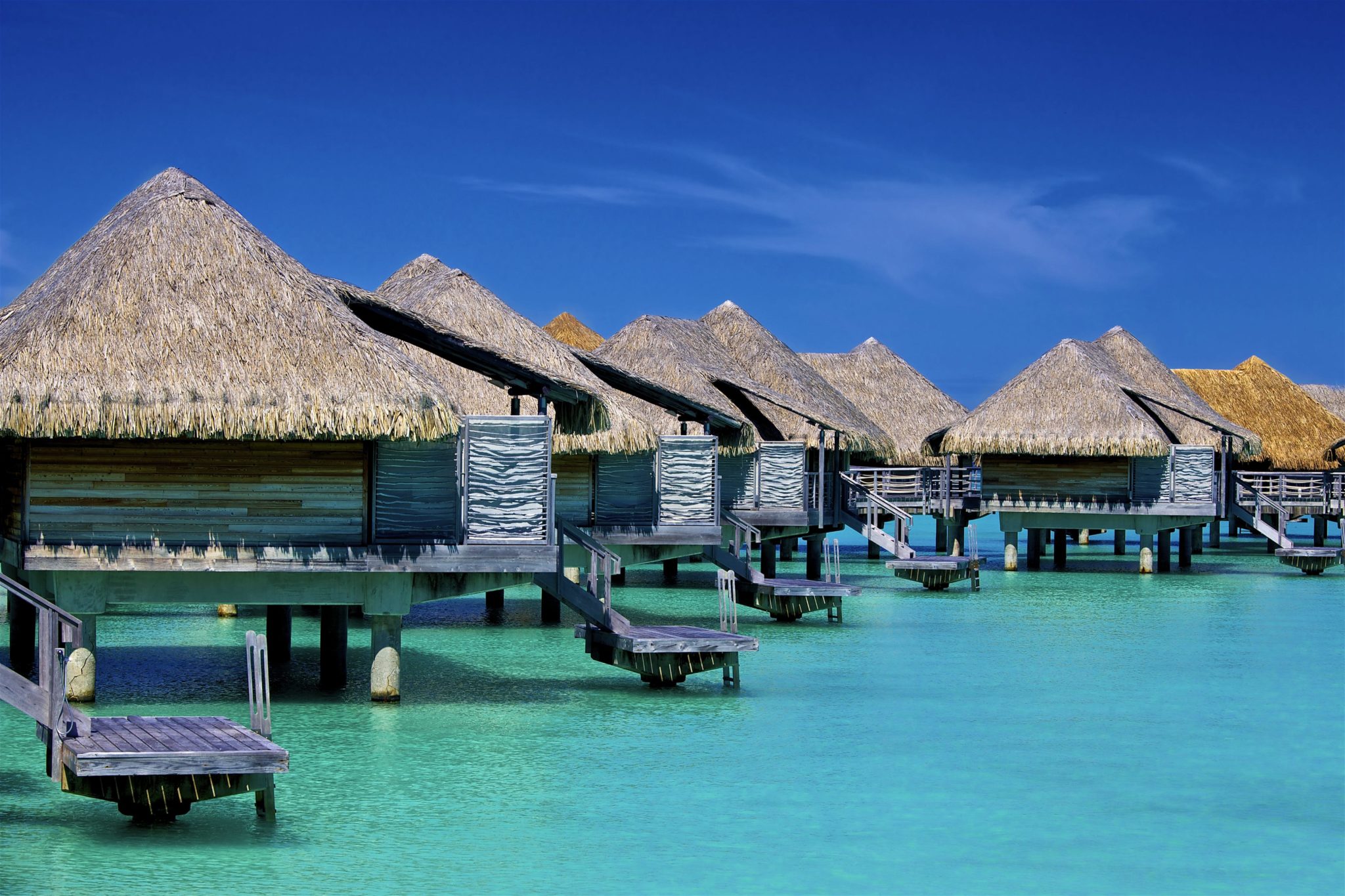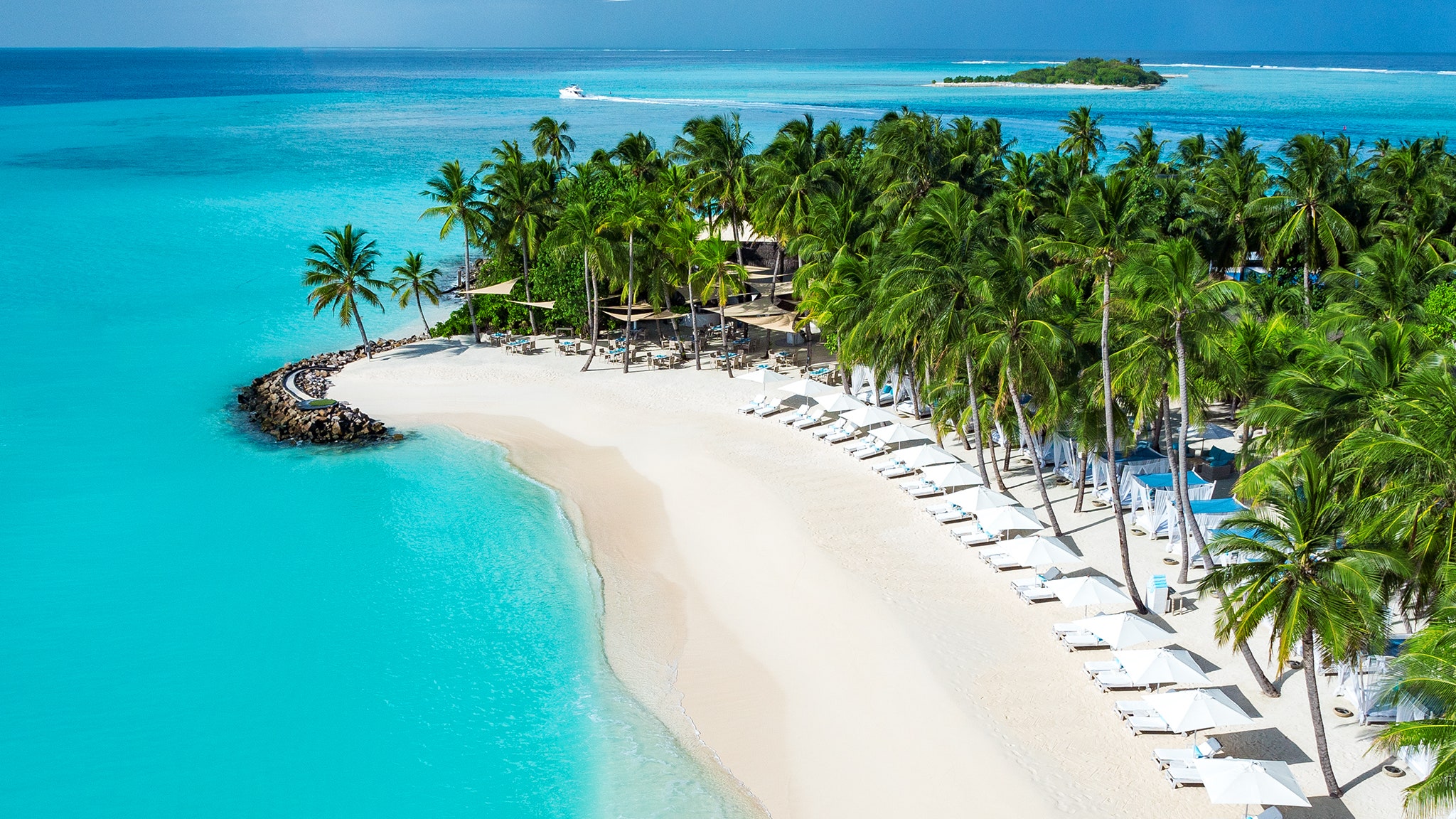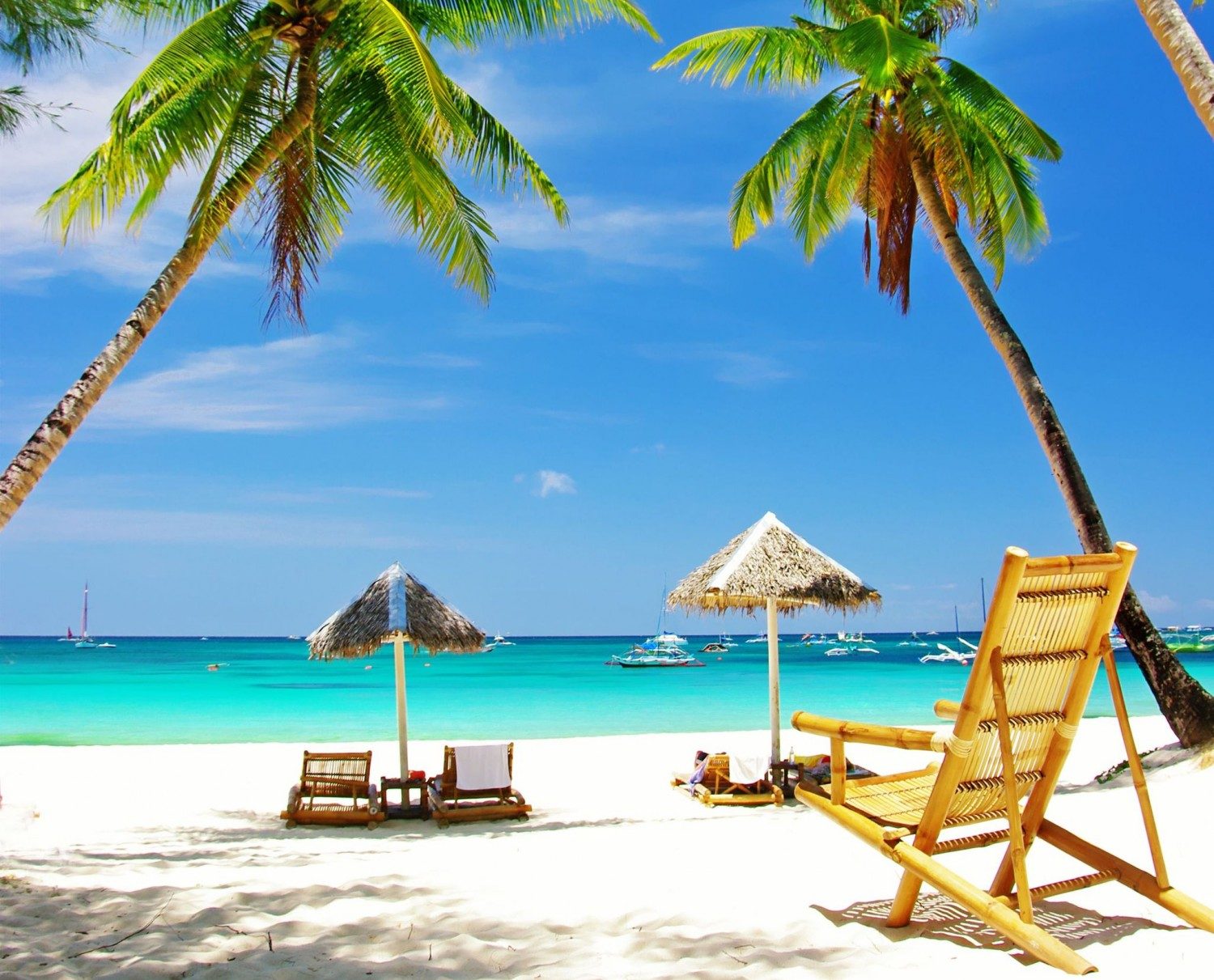Good places to go on vacation are a matter of personal preference, but this guide aims to inspire your next adventure, whether you crave thrilling escapades, relaxing beach getaways, luxurious cruises, or unique cultural experiences. We’ll explore top destinations across various categories, offering insights into budget-friendly options, family-friendly activities, and off-the-beaten-path adventures. Discover how to plan your trip efficiently, sustainably, and responsibly, ensuring a memorable and enriching journey.
From the breathtaking landscapes of Southeast Asia to the pristine beaches of the Caribbean, we’ll delve into the best destinations for every travel style and budget. We’ll also provide practical advice on budgeting, packing, and navigating various travel scenarios, helping you navigate the complexities of vacation planning with ease and confidence. Get ready to uncover hidden gems and create unforgettable memories.
Unique and Off-the-Beaten-Path Vacation Ideas
Seeking adventure beyond the typical tourist trail? This report highlights exceptional vacation experiences and practical advice for intrepid travelers. We explore unique destinations, logistical planning for backpacking adventures, cross-cultural comparisons, and ideal locations for solo exploration.
Five Unique Vacation Experiences
Several travel options provide enriching experiences beyond the conventional tourist hotspots. These alternatives cater to diverse interests and offer unique opportunities for exploration and discovery.
- Volcano Boarding in Nicaragua: Descend the slopes of an active volcano on a specially designed board, experiencing the thrill of speed and the unique landscape. This adrenaline-pumping activity offers breathtaking views and an unforgettable adventure.
- Dog Sledding in the Arctic: Journey through stunning Arctic landscapes, pulled by a team of huskies. This immersive experience provides a connection with nature and a glimpse into a unique way of life. The silence and beauty of the Arctic wilderness are unparalleled.
- Cave Diving in Mexico: Explore the underwater cenotes of the Yucatan Peninsula, marveling at the intricate cave systems and crystal-clear waters. This activity requires specialized training and equipment, but the reward is a truly unique and awe-inspiring experience.
- Trekking to Everest Base Camp: Embark on a challenging but rewarding trek to Everest Base Camp in Nepal, witnessing the majestic Himalayas and experiencing the Sherpa culture. This journey demands physical fitness and preparation, but the views and cultural immersion are unforgettable.
- Wildlife Safari in Botswana: Experience the diverse wildlife of Botswana’s Okavango Delta on a guided safari. This journey provides opportunities to witness incredible animals in their natural habitat, from elephants and lions to rare birds and reptiles. The Okavango Delta offers a unique ecosystem with unparalleled biodiversity.
Backpacking Through Southeast Asia: Logistical Planning, Good places to go on vacation
Planning a backpacking trip through Southeast Asia requires careful consideration of various factors. This section Artikels key logistical elements to ensure a smooth and rewarding journey.
- Visa Requirements: Visa requirements vary significantly depending on your nationality and the countries you plan to visit. Research visa requirements well in advance and apply for necessary visas accordingly. Many countries offer visas on arrival, but it’s best to confirm beforehand.
- Suggested Itineraries: A common backpacking route involves Thailand, Laos, Vietnam, and Cambodia. However, itineraries can be customized based on interests and time constraints. Consider focusing on specific regions or activities, such as island hopping in Thailand or exploring ancient temples in Cambodia.
- Potential Challenges: Challenges may include navigating transportation, dealing with language barriers, managing health concerns (vaccinations, malaria prevention), and ensuring personal safety. Thorough research, packing appropriately, and taking necessary precautions are essential.
Cultural Comparison: Japan and Brazil
A comparison of Japanese and Brazilian cultures reveals striking differences in traditions and customs. These distinct cultural landscapes offer unique insights into human diversity.
You also can understand valuable knowledge by exploring australia flight ticket.
| Country A: Japan | Country B: Brazil |
|---|---|
| Emphasis on politeness, formality, and respect for hierarchy. Bowing is a common greeting. | More informal and relaxed social interactions. Physical touch and greetings are common. |
| Strong emphasis on group harmony and consensus-building. Individuality is often subdued. | Strong sense of individuality and personal expression. Direct communication is prevalent. |
| Traditional arts like calligraphy, tea ceremony, and ikebana (flower arranging) are highly valued. | Rich musical traditions like samba and bossa nova, and vibrant Carnival celebrations are central to cultural identity. |
| Cuisine features meticulous preparation and presentation. Seafood and rice are staples. | Cuisine is diverse and influenced by various cultures. Meat, beans, and rice are common. |
| Shinto and Buddhism are major religions, influencing daily life and festivals. | Predominantly Roman Catholic, with strong influences on cultural events and celebrations. |
Destinations Ideal for Solo Travelers
Solo travel offers unique opportunities for self-discovery and independence. Choosing safe and enriching destinations is crucial for a positive experience.
- Iceland: Iceland offers stunning natural beauty, safety, and well-developed infrastructure. Opportunities for hiking, exploring glaciers, and witnessing the Northern Lights abound. Safety is generally high, with readily available resources for travelers.
- Portugal: Portugal offers a blend of history, culture, and beautiful coastlines. The country is known for its friendly people and relatively low crime rates. Exploring charming towns and enjoying delicious cuisine are highlights.
- New Zealand: New Zealand is a haven for outdoor enthusiasts, with opportunities for hiking, adventure sports, and exploring stunning landscapes. The country is known for its safety and well-maintained trails, offering ample opportunities for self-reflection and exploration.
Vacation Planning and Preparation
Planning a successful vacation requires meticulous preparation and organization. A well-structured plan minimizes stress and maximizes enjoyment, transforming a potential source of anxiety into a memorable experience. This involves several key steps, from initial research to post-trip reflection.
Step-by-Step Vacation Planning Guide
A well-defined plan ensures a smooth vacation. This step-by-step guide Artikels the crucial stages of vacation planning, from conception to post-trip analysis.
- Destination Selection: Research potential destinations based on interests, budget, and travel time. Consider factors like climate, activities, and cultural experiences.
- Dates and Duration: Choose travel dates considering factors such as peak season pricing, weather conditions, and personal availability. Determine the optimal trip length based on planned activities and budget.
- Budgeting and Financial Planning: Create a detailed budget encompassing flights, accommodation, activities, food, transportation, and miscellaneous expenses. Explore various payment options and consider travel rewards programs.
- Accommodation Booking: Research and book accommodations based on preferences, budget, and location. Consider factors such as proximity to attractions, amenities, and reviews.
- Flights and Transportation: Book flights and arrange ground transportation (rental car, public transport, etc.) in advance, especially during peak season. Compare prices from different airlines and transportation providers.
- Activities and Itinerary: Plan daily activities and create a tentative itinerary. Research attractions, tours, and events of interest. Allow flexibility for spontaneous adventures.
- Packing and Preparation: Prepare a packing list tailored to the destination and activities. Confirm travel documents (passport, visa, tickets) are up-to-date and readily accessible.
- Travel Insurance: Purchase comprehensive travel insurance to cover unexpected events such as medical emergencies, trip cancellations, or lost luggage.
- Post-Trip Reflection: After the trip, reflect on the experience. Review photos, jot down memories, and assess what worked well and what could be improved for future trips.
Creating a Detailed Travel Budget
Accurate budgeting is essential for a financially responsible vacation. Unexpected costs can quickly derail even the best-laid plans. This requires careful consideration of all potential expenses.
| Budget Item | Estimated Cost |
|---|---|
| Flights | $500 – $1500 (depending on destination and time of year) |
| Accommodation (7 nights) | $700 – $2100 (depending on type of accommodation and location) |
| Activities and Tours | $350 – $700 (depending on chosen activities) |
| Food and Drinks | $350 – $700 (depending on dining choices) |
| Transportation (local) | $100 – $300 (depending on transportation method and usage) |
| Miscellaneous Expenses (souvenirs, tips, etc.) | $100 – $200 |
| Total Estimated Cost | $2100 – $5000 |
Note: These are estimates and can vary significantly depending on the destination, travel style, and time of year.
Packing Checklist for a Tropical Vacation (7 Days)
A well-organized packing list ensures you have everything you need without overpacking. Categorizing items simplifies the process.
Clothing:
- Lightweight shirts (5-7)
- Shorts or skirts (3-4)
- Lightweight pants or capris (1-2)
- Swimsuit (1-2)
- Sundress or casual dress (1-2)
- Underwear and socks (7 sets)
- Pajamas
- Light sweater or jacket (for evenings)
- Hat
- Comfortable walking shoes
- Sandals or flip-flops
Toiletries:
- Sunscreen (high SPF)
- Insect repellent
- After-sun lotion
- Shampoo, conditioner, soap
- Toothbrush, toothpaste, floss
- Deodorant
- Any necessary medications
Travel Documents:
- Passport (with at least six months validity remaining)
- Visa (if required)
- Flight/hotel confirmations
- Travel insurance information
- Copies of important documents (stored separately)
- Credit cards and cash
- Driver’s license (if renting a car)
Importance of Travel Insurance
Travel insurance provides financial protection against unforeseen circumstances during your trip. Various coverage options cater to different needs and budgets.
- Trip Cancellation/Interruption: Covers expenses incurred if you must cancel or cut short your trip due to unforeseen events (illness, injury, family emergency).
- Medical Expenses: Covers medical costs incurred during your trip, including emergency medical evacuation.
- Baggage Loss/Delay: Covers the cost of replacing lost or delayed luggage.
- Emergency Assistance: Provides 24/7 access to emergency assistance services, such as medical referrals and emergency transportation.
- Other Coverages: Some policies may offer additional coverage for things like flight delays, rental car damage, and personal liability.
Sustainable and Responsible Travel: Good Places To Go On Vacation

The tourism industry, while offering incredible opportunities for exploration and cultural exchange, carries a significant environmental footprint. The sheer volume of travelers contributes to greenhouse gas emissions, habitat destruction, and resource depletion. However, by adopting sustainable practices, individuals can significantly mitigate their impact and contribute to the preservation of destinations for future generations. This section explores key strategies for environmentally conscious travel.
Minimizing Your Carbon Footprint
Travelers can actively reduce their environmental impact through conscious choices. Minimizing air travel, opting for public transportation or cycling whenever feasible, and choosing accommodations with strong sustainability initiatives are crucial steps.
- Reduce Air Travel: Consider alternative transportation methods like trains or buses for shorter distances. For longer journeys, explore carbon offsetting programs to compensate for emissions.
- Choose Sustainable Transportation: Prioritize walking, cycling, or utilizing public transport within destinations. Rent electric or hybrid vehicles if car rental is necessary.
- Pack Light: Lighter luggage reduces fuel consumption during transportation.
- Reduce Water and Energy Consumption: Conserve water and electricity in your accommodations by turning off lights and appliances when not in use, and reusing towels.
Eco-Friendly Accommodations and Tour Operators
Many hotels and tour companies are actively integrating sustainable practices into their operations. These businesses prioritize renewable energy sources, waste reduction, and responsible sourcing of materials.
- Eco-lodges: These establishments often operate off-grid, using solar power and rainwater harvesting. Examples include various eco-lodges found in the Amazon rainforest and Costa Rica, which frequently incorporate local building materials and prioritize community engagement.
- Certified Sustainable Tour Operators: Look for certifications like Green Globe or Global Sustainable Tourism Council (GSTC) which indicate a commitment to environmental and social responsibility. These operators often prioritize smaller group sizes and minimize their environmental impact.
- Fair Trade Tourism: Support tour operators committed to fair wages and equitable working conditions for local communities.
Supporting Local Businesses and Communities
Patronizing local businesses provides numerous benefits, including boosting the local economy, preserving cultural heritage, and reducing the environmental impact associated with large-scale tourism.
- Eat Local: Choose locally sourced food and beverages, supporting local farmers and reducing the carbon footprint associated with food transportation.
- Shop Local: Purchase souvenirs and handicrafts directly from local artisans, ensuring fair wages and preserving traditional crafts.
- Stay in Locally Owned Accommodations: Opt for smaller, family-run guesthouses or homestays instead of large international hotel chains.
- Participate in Community-Based Tourism Projects: Engage in activities that directly benefit local communities, such as volunteering or taking part in cultural exchange programs.
Responsible Wildlife Tourism
Ethical wildlife encounters are crucial for protecting animals and their habitats. Avoid activities that exploit or endanger wildlife, and prioritize interactions that minimize disruption to their natural behaviors.
- Avoid Activities that Exploit Animals: Refuse to participate in activities like elephant riding, swimming with dolphins in captivity, or interacting with animals that have been removed from their natural habitats.
- Maintain a Respectful Distance: Observe animals from a safe distance, avoiding actions that might stress or frighten them. Use binoculars or zoom lenses for better viewing.
- Support Conservation Efforts: Choose tour operators that actively support conservation initiatives and contribute to protecting wildlife and their habitats.
- Research Before You Go: Learn about the animals you plan to see and the best ways to observe them ethically. Understand the potential impacts of tourism on the animals and their environment.
Planning the perfect vacation requires careful consideration, but with the right resources and guidance, the process can be both exciting and rewarding. This guide has provided a comprehensive overview of diverse vacation options, practical planning tips, and insights into sustainable and responsible travel. Whether you’re seeking adventure, relaxation, or cultural immersion, remember that the journey itself is just as important as the destination.
So, pack your bags, embrace the unknown, and create memories that will last a lifetime. Happy travels!



